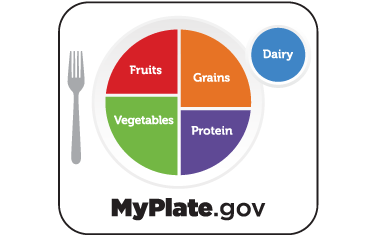Helping Young Children Thrive
Healthy Practices in the Early Care and Education (ECE) Setting

children aged 2 to 5 (nearly 14%) have obesity.
Obesity during childhood can put children at risk for physical conditions such as type 2 diabetes, high blood pressure, and liver disease, and psychological conditions such as bullying, low self-esteem, and anxiety.

Young children who are overweight in kindergarten are 4 times more likely to have obesity by 8th grade than those who are not overweight in kindergarten.

Early feeding practices are important for the healthy growth of infants and toddlers.

Both a healthy diet and physical activity are linked to better cognitive development.
Starting healthy habits for physical activity in early childhood influences activity levels as children grow.

of children birth to 5 years old are in care outside of their home at least once a week.
Of the 21.2 million children birth through age 5 and not yet in kindergarten, about 3 in 5 (12.5 million, or 59%) are in care outside their home at least once a week, with center-based care the most common.

The ECE setting can directly influence what children eat and drink and how active they are. This builds a foundation for healthy habits.

CDC tracks progress in state ECE systems to help partners and practitioners improve children’s nutrition and physical activity in ECE facilities.

CDC funds and supports states and communities to help childcare providers adopt obesity prevention best practices and encourage family involvement in ECE settings.

CDC develops tools and resources that guide national, state, and local partners on ways to prevent obesity in the ECE setting.

CDC partners with national organizations, states, communities and other key ECE partners to strengthen healthy growth and prevent obesity in the ECE setting.

Children from families with lower incomes are more likely to have obesity. Obesity in young children enrolled in the Special Supplemental Nutrition Program for Women, Infants, and Children (WIC) decreased from 15.9% in 2010 to 14.5% in 2014 and then remained stable until 2018 (14.4%).
Improvements in the WIC program, along with CDC and state support in ECE systems and settings, may have contributed to the modest decline.

Since 2010, 39 states have incorporated “high-impact” obesity prevention standards in their ECE licensing regulations.
States are also including more of the 47 high- impact standards in their regulations—the percentage of these standards fully included in licensing regulations more than doubled, from 13% in 2010 to 29% in 2018.